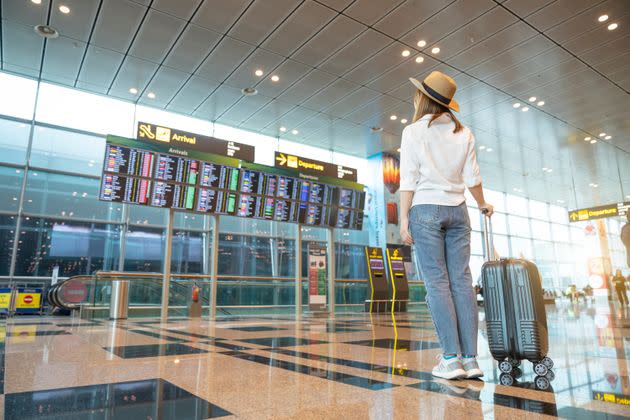Packing a carry-on suitcase efficiently can help you maximize space and make your travel experience more convenient. Here’s a step-by-step guide on how to pack a carry-on suitcase in depth:
1. Choose the Right Carry-On Suitcase:
Ensure your suitcase complies with airline size regulations for carry-ons. Check with your airline for specific dimensions and weight limits.
2. Make a packing list:
Create a list of essential items you’ll need during your trip. This will help you avoid overpacking.
3. Roll or Fold Your Clothes:
Rolling clothes can save space and minimize wrinkles, while folding can be more organized. Choose the method that works best for you. For delicate items, folding may be preferable.
4. Use packing cubes.
Packing cubes can help keep your clothes organized and compact. Group similar items together, such as tops, bottoms, and underwear, in separate cubes.
5. Prioritize essentials:
Place essential items like travel documents, medications, toiletries, and a change of underwear in your carry-on bag. This ensures you have what you need even if your checked luggage is delayed or lost.
6. Maximize Space:
Utilize every inch of your suitcase efficiently. Fill shoes with socks or small items. Place smaller items like chargers, toiletries, and underwear in the gaps between rolled clothes.
7. Layer Strategically:
Start with the heaviest and bulkiest items at the bottom of the suitcase. Place lighter items on top to prevent wrinkling.
8. Consider the weather and activities:
Pack clothing appropriate for the weather at your destination. If you plan to engage in specific activities, pack suitable attire.
9. Minimize shoes:
Shoes can take up a lot of space. Limit yourself to a maximum of two pairs: one you wear during travel and one additional pair if necessary.
10. Don’t forget electronics:
Keep your electronics and their chargers easily accessible. Consider using a cable organizer to prevent tangling.
11. Pack toiletries securely.
Place toiletries in a clear, quart-sized, resealable plastic bag to comply with airline security regulations. Use leak-proof containers to prevent spills.
12. Keep valuables safe.
Carry valuable items, such as jewelry and electronics, in your personal item (e.g., a backpack or purse) rather than in your checked luggage.
13. Use travel-size products:
Opt for travel-size toiletries or transfer your regular products into smaller containers to save space.
14. Leave Room for Souvenirs:
If you plan on buying souvenirs during your trip, leave some space in your carry-on for them.
15. Consider a packing checklist:
Use a checklist to ensure you haven’t forgotten any essentials.
16. Zip Up and Secure:
Close your suitcase, making sure it’s securely fastened. Use any external pockets for items you may need during your flight.
17. Weigh Your Carry-On:
Check the weight of your carry-on to ensure it complies with airline regulations.
By following these steps, you can efficiently pack your carry-on suitcase and make the most of the limited space while ensuring you have everything you need for your trip.



